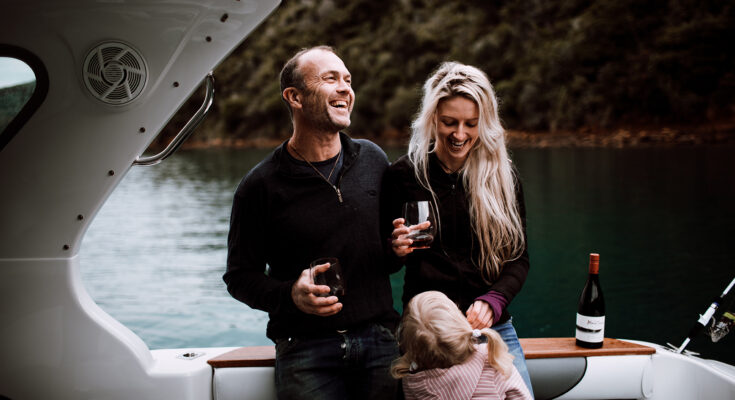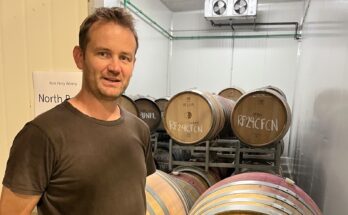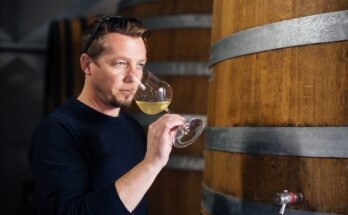At the end of my recent trip to Marlborough, I caught up with our newest Master of Wine – Sophie Parker-Thomson, and well-known winemaker/consultant partner Matt Thomson, to talk about their Blank Canvas label.
It’s usually me asking people how they’ve got to where they are today, but first off Sophie wanted to know a bit about my background and how I’ve come to be a commentator on New Zealand wines. I won’t bore you with the five-minute explanation, but it did lead to an interesting discussion…
Sophie Parker-Thomson: When you think about the landscape of New Zealand wine communicators, from a producer perspective there are not many that have international gravitas and impact that assist in the marketing and selling of wine overseas.
Bob Campbell MW of course has been hugely instrumental in building the reputation and image of New Zealand wine internationally for a long time, and we now have Cameron Douglas MS who is starting to do some great NZ wine advocacy work. But when I ask our global distributors which other scores/reviews carry weight in their market, there is generally only the same one or two names given out.
WineFolio: There’s also not too many who come from that background of writing and story-telling. I think some of them have learnt to do that. I’m always looking to tell the story – the places I’ve been, the people I talked to… then gradually the wine is at the end of that story. I never intended to be a wine reviewer or judge, I wanted to write.
SPT: Yes, that’s a whole different ball game, judging.
WF: I found it quite daunting. Not least, the speed at which you have to hammer through them.
Matt Thomson: Which not everyone can do, accurately.
SPT: I think that’s one of the flaws of judging, is that things get rushed through.
WF: For me, whose background is sitting enjoying a glass of wine, and then discussing it, that’s quite challenging. I said as much to Natalie Christensen at the show, and she said that, as a winemaker, she might have to assess over a hundred different ferments of one varietal in a very short space of time – so her winemaking background prepares her for something like judging, assessing, wines, at pace.
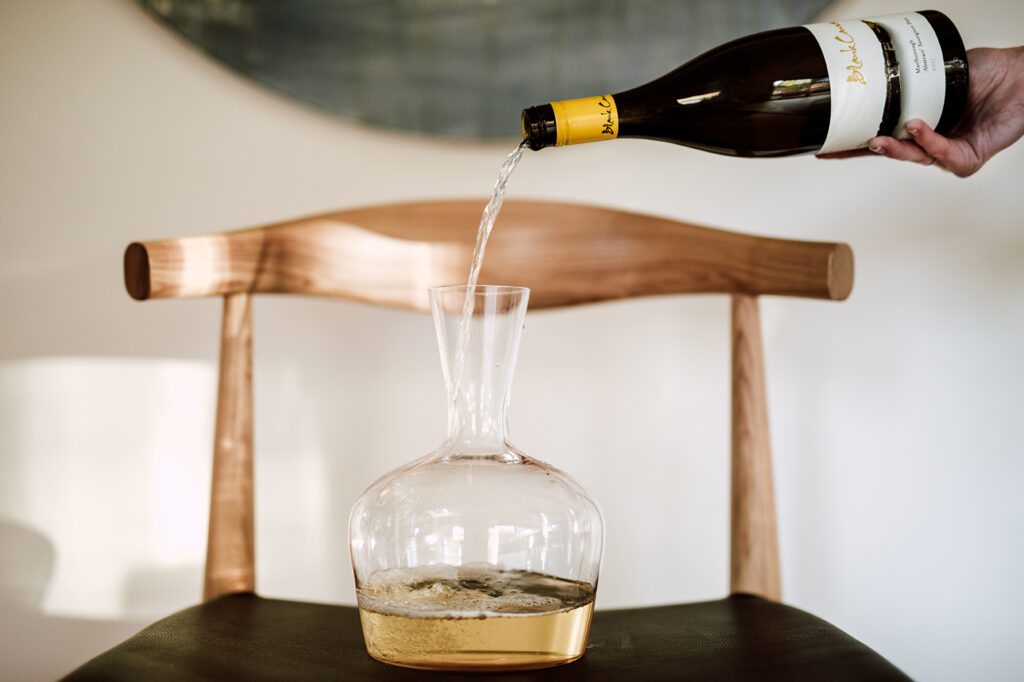
SPT: Shall we look at a few wines?
WF: We can taste and chat? I’ve been mostly on the Sauvignon Blancs today, given it is ‘International Sauvignon Blanc Day’, but I don’t mind that. You’d be surprised how many people don’t want to look at Sauvignon? And I know that you may have a preference, but c’mon..
MT: But if you’re professional then you do not exclusively look at what you like to drink – you consider what is actually important to consumers. I get really frustrated when I hear comments from local winemakers “oh, Sauvignon’s boring, Sauvignon’s easy to make”. Now people who say Sauvignon is easy to make usually don’t make a good one! (laughs). Seriously. It’s easy to make an OK one. But it’s pretty hard to make a really good one. And it’s detail, detail, detail.
WF: And starting outside the winery as well. Starting with the intentions of growing grapes that will make great wine.
MT: Yes, it starts with that. Site is so important, and then there’s so much you need to get right. And people who don’t want to do that variety, and they’re in Marlborough? It’s like saying you don’t like doing sparkling wines in Champagne. You’re in the wrong place, go somewhere else.
SPT: That’s one thing we always laugh about – Marlborough gets bashed for being a one trick pony, but does Barossa get nailed for doing Shiraz?
MT: It’s because Marlborough is successful. Jerez doesn’t get pinged for doing Sherry well. Actually we do some amazing other things.
We do a lot of good Pinot, and a lot of good Chardonnay… we still do the most Pinot in the country. So it’s not that the others are unsuccessful, it just that Sauvignon has been so successful. We’re excited about the other varieties but also very proud of our Sauvignons.
SPT: All of our wines are single vineyard wines. That’s our philosophy that we’ve followed from Day One. And here is our new release of our Blank Canvas Abstract Sauvignon Blanc. We do two Sauvignon Blancs – our classic style of Sauvignon, which is very fruit-driven and precise – and sold out [2020, the 2021 is now released but strictly allocated!] – and this is our Abstract which our alternative interpretation of Sauvignon Blanc. It’s hand-picked, whole bunch pressed, full solids fermentation, free-run only, fermented wild in seasoned French oak puncheons. We don’t do any lees stirring, no fining, no filtration – a lot of “no’s” actually. It is on lees for 14 months. Pretty minimalist winemaking I guess, but it’s knowing when to intervene and when to not do anything.
MT: We actually think it’s closest to the style of white Bordeaux – the ’17 even more so. It’s got a sweet blackcurrant note that great white Bordeaux has.
SPT: And I think it has, from that solids fermentation, that musky kind of character that white Bordeaux can get. Here in New Zealand it’s unfortunate that we don’t really get a lot [of white Bordeaux], and what does arrive gets allocated to fine wine purchasers and collectors. And it is expensive. But this is a category that Marlborough needs to be talking about more, because it is part of the premium-isation journey and part of the growing-up of Marlborough. We’re always going to have that classic style and that’s a part of what defines us to a large extent. But we’ve also got these wonderful alternative styles of wine that are emerging and that we’re getting better and better at.
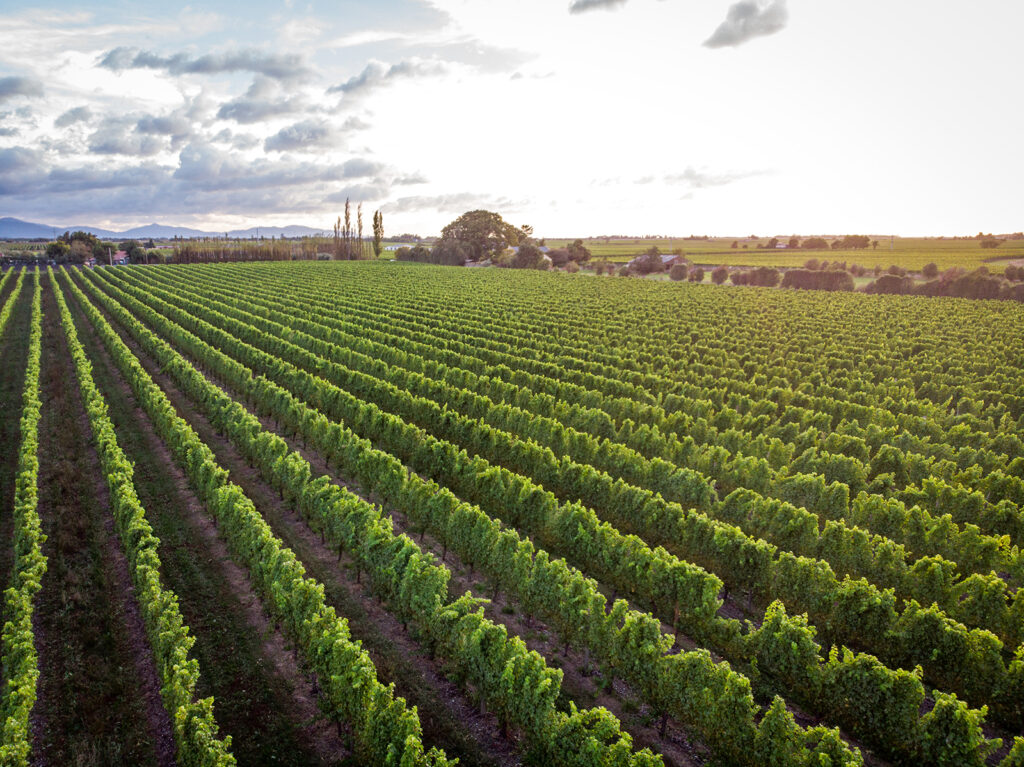
WF: And each of your wines is from a special place isn’t it? Is that where the name Blank Canvas comes from? You have no set ideas about something until you find the place and then think “I can do something here”?
MT: It’s also a statement about ‘this is 100% ours”. I’ve got a background as being a consultant. As a consultant you’ve got to respect the brief of the person who’s paying you. You’ve got to understand what they want you to do. But this is us, so we can do whatever we like!
SPT: Multiple meanings and it’s also a synthesis between art and science. Matt’s background is in science, and I’m now a Master of Wine and we’ve got these divergent skills, but we do firmly believe that you need the science background in order to be creative with wine, because if you don’t know the boundaries of the canvas you can only paint a tiny picture in the centre.
If you do know the boundaries you can paint right to the edge (without going over it)… But Matt is definitely the winemaker and I’m more like the glorified cellar rat. But importantly we talk about all our wines and wine styles, and what we should do each year together – and more or less every night.
WF: Are there times where you’ve worked somewhere and they are getting you to do X with it, but you are thinking that would be much better with Y?
MT: You state your case and you justify it, but ultimately if that’s not what they want to do, you’ve got to respect that. I don’t say yes all the time. It’s their money and it becomes their problem if it’s wrong. I’ve always felt in life that people are much more tolerant of their own mistakes, and very intolerant of mistakes that are imposed upon them.
SPT: There’s a lot of cross-pollination between what we do at Blank Canvas and our clients. Clients benefit from what we do at Blank Canvas too because we are being a bit more experimental with these wines. And successes get fed back to the client about things that have worked really well. We’ve changed our labels now, so the vineyard goes on the front. So it’s ‘Blank Canvas – Holdaway Vineyard – Marlborough Sauvignon Blanc’.
WF: I got hold of a big batch of Sauvignon Blanc 2020s at the end of a big wine show I was stewarding at, and a few labels I’d not had before like Holdaway and Caythorpe. But I have to say there haven’t been many 2020s where I haven’t thought they were very good.
MT: We don’t enter shows and there’s a reason for it. In fact we don’t enter panel tastings of any sort with our Blank Canvas wines I know very well, with my long history with St Clair as an example, of what you need to do to win at wine shows. You need to make a very good example of a mainstream wine, and for it to be what people expect. If it strays too far out stylistically then there’ll be some judges don’t like it. Even if a couple really do like it, one won’t; and then you’ve got a problem as it drags your scores down.
So with Blank Canvas, we know we’re making something that’s not necessarily mainstream, but what we would like to think qualifies as a fine wine considered in an international context, so we would send or show them to individual wine critics. They may or may not like it and that’s fine, because not everyone will like what we do. But if they do like it, there’s a good chance they’ll really like it. And that fits with our idea that we’d rather make wines that some people love, than what everyone ‘quite likes’. That’s the difference between making those mainstream wines that everyone likes, and something that actually gets you thinking.
WF: Well, I’m a big advocate for wines with character and personality. If you look in the Silver Medal tier you’ll find those – where it was a wine that some loved, but someone didn’t like it, so it got pulled down to a Silver. And also the stuff at the edges is often where the interesting things are.
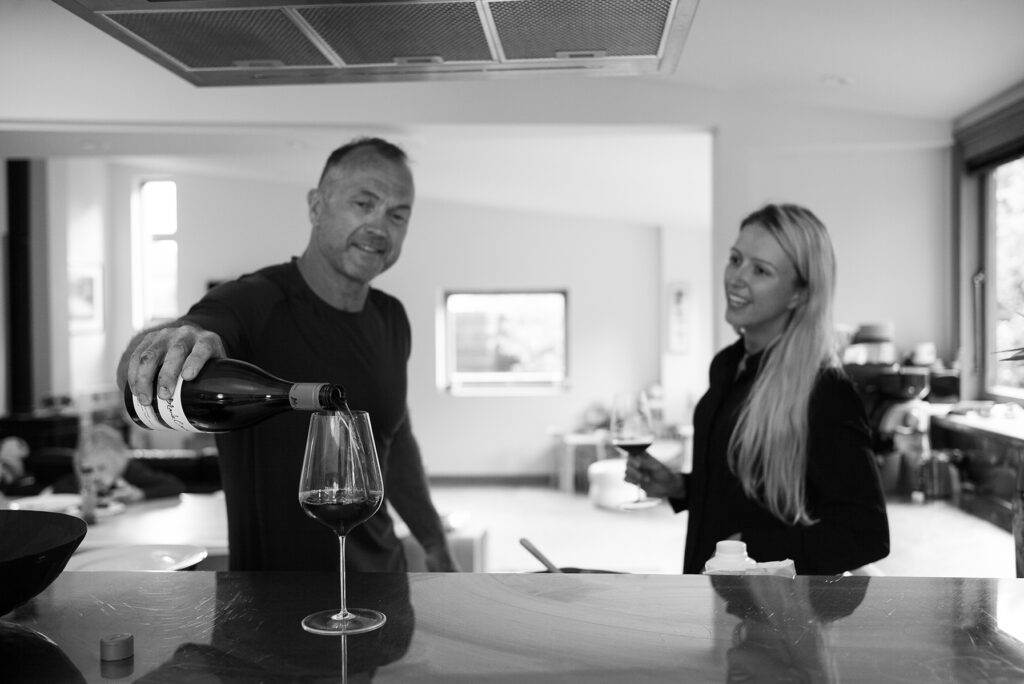
SPT: I find it fascinating. You look at the results these days and a lot of the time the second tier wines get the Golds, and Flagship wines of the winery actually end up getting Silver or Bronzes. Frequently that’s what happens – and I study wine show results a lot!
WF: This is a great wine. I see what you mean about blackcurrant, but it’s also got really lovely mandarin peel and ginger spiciness hiding in there too.
MT: Sometimes green descriptors are used for Sauvignon Blanc – for example, blackcurrant leaf.. but for me this has the sweet blackcurrant, bonbon style flavour that white Bordeaux also has..
WF: Coming from the north of Europe – and part of my family is Norwegian, we have a whole range of currants and berries that you don’t see much of outside of there. White ones, and pale pinks ones – I don’t recall the names.
SPT: We note the different spectrums of currants as ways to describe our subregions. So, Southern Valleys tends to have more white currant, we find; then down in Dillons Point tends to be that blackcurrant expression.
MT: What about those little snowberries they have in the alpine regions – amazing. We had just been up at the Holdaway’s Wye Valley property and were eating them as they grew in the wild – they were so tasty!
SPT: The Holdaway family in Dillons Point have a huge forestry block up in the Wye Valley. They’re regenerating 2000 hectares of it into native forest.
MT: 20 square kilometres! Incredible. It’s a huge undertaking. They’ve got possum lines, to eradicate the possums, and have killed a whole lot of pigs and deer. Because that’s the key to regenerating. And it’s happening fast. They’ve got these mature stands of totara and every species of beech that I know of.
SPT: They are amazing in terms of their vineyard, their regenerative approach to everything, their sustainability.
WF: I was with Hatsch yesterday, finishing off a piece with him, because the last time I was here I got halfway through and had to run. And he was saying that they’re not going down the Biodynamic path, although they could; but they’re happy doing a really good job at Organic – like Organic Plus.
SPT: And many people do not realise that there’s actually a spectrum within regimes, so you‘ve got environmentally positive at one end and environmentally negative at the other; and in the middle you’ve got neutral. Conventional viticulture spans a broad range. With organics it’s a much narrower spectrum, but even that can be environmentally negative. We do feel that you can end up in a very environmentally positive position within conventional (a sub-set of which is regenerative), though it’s important to note that you can also be organic and regenerative. It is interesting but exciting times with the work being done to improve the key metrics of soil health and biodiversity.
MT: What’s also frequently misunderstood is that within a conventional regime, or let’s say, regenerative, you can use all of the organic practices and applications you like, everything you know is positive, but importantly you can use other modern products and which allow more sustainable and environmentally positive outcomes.
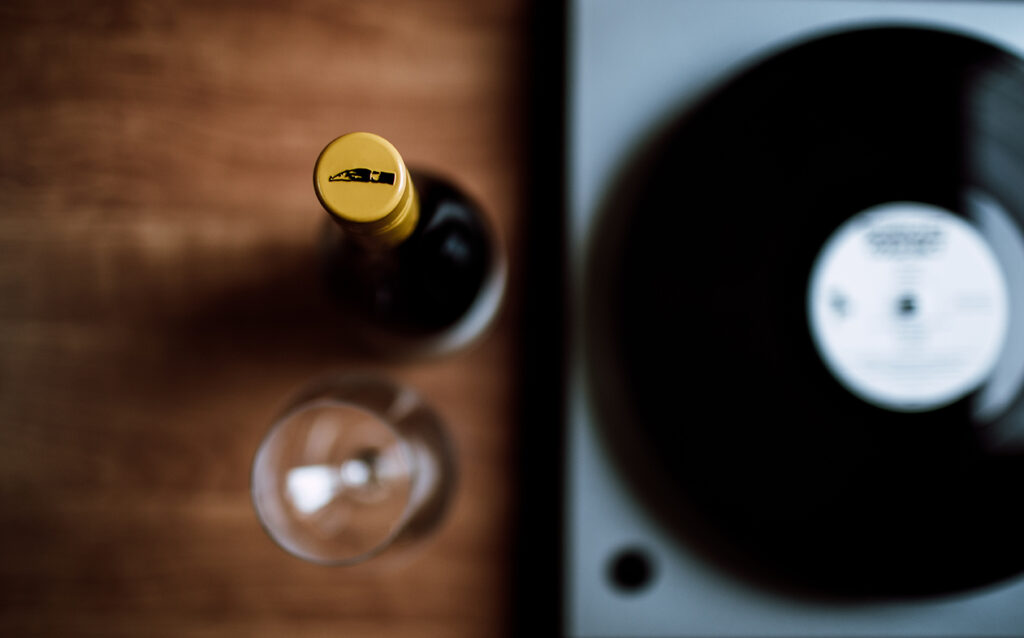
On biodynamics, we don’t accept an almost religious like belief without any evidence. The thing that does work is soil microbiology, but there’s no research that shows biodynamics preparations per se work – in fact there are papers that say the opposite. I will absolutely accept something if someone can substantiate it. But I won’t just believe. However, coming back to your point about stories and story-telling, the biodynamics story has really resonated with certain consumers and there are practitioners who are deeply passionate about the rituals and the all-encompassing biodynamic life, which I respect.
But I would take the same challenging approach to vineyards. “Yeah, OK, fine – show me how it works. Show me the mechanism, describe it to me. Show me the research that shows it’s effective”. They can’t.
The Holdaways have really impressed me. They have worked on a programme for a number of years now, and the last two seasons they’ve managed to get some of their blocks through with 100% biological – no chemical sprays at all, no copper, no sulphur. All vineyard regimes – conventional, organic, biodynamic traditionally use both copper and sulphur. Organics/BD have to use more because they have limited other options. Both are broad-spectrum fungicides and copper particularly is acutely toxic.
All the Holdaways did was applied competitive microbes. This beneficial microbial activity out-competes the pathogen, and as a result you don’t get powdery mildew, downy mildew, and nor do you get botrytis. . This season they got right through until harvest with that genuinely no-chemical-spray regime. Now I can tell you no-one else that I know of has been able to that. Or even tried to do it properly. Some people have actually tried biologicals half-heartedly, but that doesn’t work. If you don’t get it 100% right, and you end up getting a fungal infection you’ve got to hit it with a fungicide (any kind whether it’s systemic or sulphur), then of course you’re going to lose all the positive microbes.
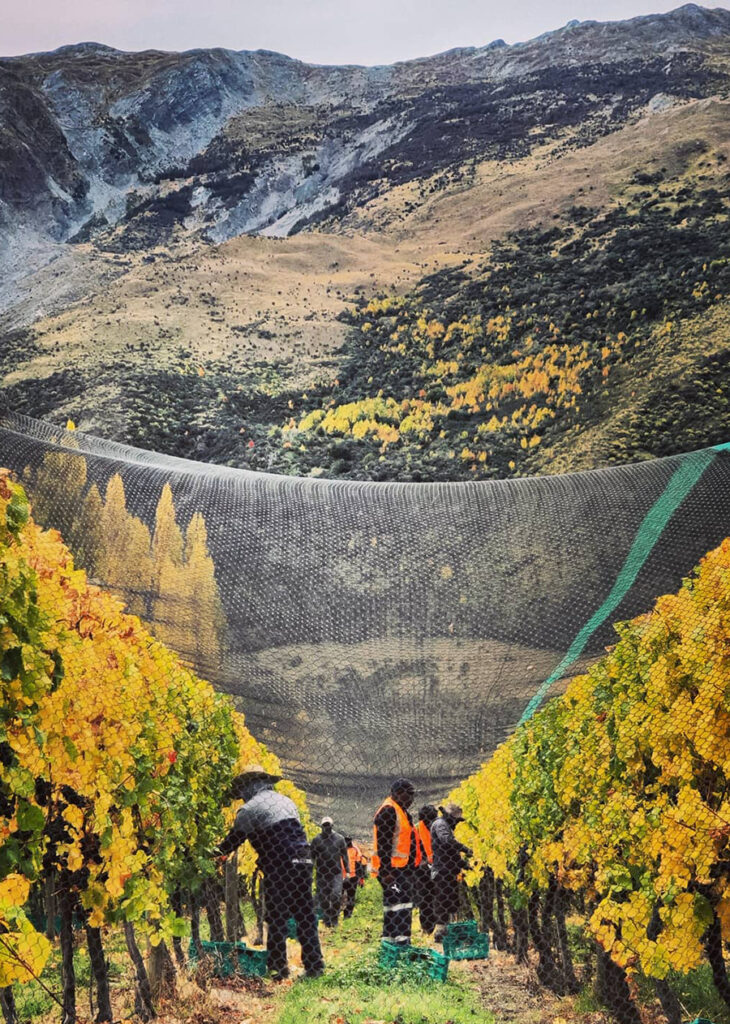
This is our Gruner Veltliner.. we’ve played around with it since it first became available to plant in New Zealand. First vines were planted in 2008-9 growing season after they went through their quarantine period. One of Matt’s friends, Malcolm Adams, planted a couple of hectares, and Matt said it could be quite good because it’s a similar climate to the Wachau in Austria. We’ve got relatively similar soils – loess and silt and gravel – and enough of a diurnal range so you get that ripeness and also the acidity. We’re really happy with the style as it’s evolved.
WF: How many people do Gruner here in Marlborough?
SPT: Off the top of my head about fifteen, I’d say
WF: I can’t remember what the wine was, but it was a Gruner from Marlborough.. and I’m pretty tolerant, but it was the only wine I can remember in ages – that I spat out. It was bitter and thin.
MT: I think I know what went on there: it was likely harvested with a high proportion of green/unripe fruit. Gruner has got really thick skins and it goes through what we call a second veraison, well after the normal veraison. It changes from green to golden and that happens quite late. If it doesn’t get through that, then the thick skins give it a real bitterness. The other problem is if you wait forever for it to be really ripe, you end up with 14.5% alcohol. You’ll notice with this, on the finish there’s a bit of spice, and that’s the natural white pepper spice from the Gruner skins. Now if you add a whole lot of alcohol to that as well, you’ll end up with a very hot finish. So you can’t have too much alcohol in my opinion.
The trick is not to have too much green fruit, but how do you do that? Well, you approach it like a red wine. You need to green-thin. You need to take out that late fruit so you’ve got a more even ripening, and it all goes through so when you harvest at 22-23 brix where it’s got 13.5% potential alcohol, then you haven’t got that green, bitter character.
Now the other things is – when people approach a new variety, they tend to rely on how they make other wines. Gruner is very different to anything we have here in NZ. Sauvignon production is generally the go-to –…they’ll often machine-harvest it, so it gets skin-contact; and that, with a thick-skinned variety means bitter phenolics. And they are bitter. Over the many years I’ve been making wine internationally, I’ve made a lot of different varieties. I look at each one and try and understand how to make the wine with an open mind, every single time. And a big part of that is doing your research beforehand by tasting as many examples of that variety as you can – because you learn the mistakes that can be made. The next thing is to get out there and start chewing the grapes, working out what’s in those skins. You ask ‘Do I need to get them off the skins fast? What are the upsides, the downsides?’ It’s kind of a systematic approach, but it’s one I’ve built up over the years.
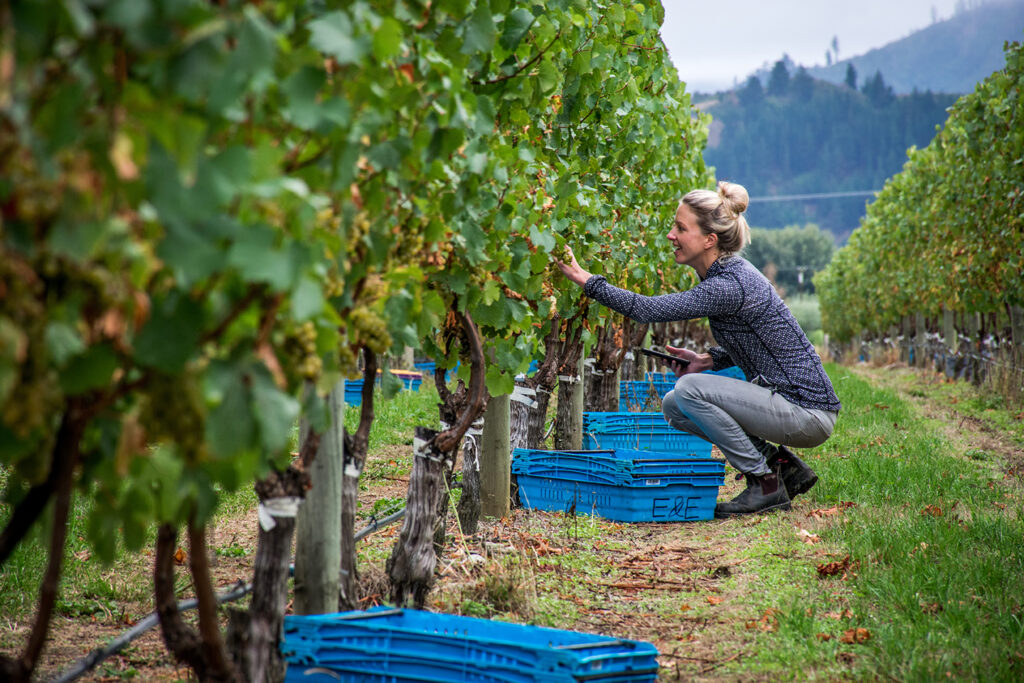
SPT: We’ve had a lot of success with the Gruner. It tends to go really well in on-trade. London on-trade love it. We’ve had Austrians say ‘that’s very true to variety’.
MT: We’ve actually got the highest [equal – shared with a Gruner from Sonoma and one from Czech] score on JancisRobinson.com for any Gruner outside of Austria. We get a bit more of the orange peel note than the Austrians do alongside fruit intensity.
SPT: Interestingly the Austrians have a particular word to describe the ‘good bitterness’ in Gruner, that’s the phenolic grip that’s part of the textural structure. We use a bit of new oak with this wine. 60% of it went through French puncheons and about 20% was new oak. So, it’s not enough that you particularly see it, but it’s there to flesh out the mid-palate. I think that balance works quite well with that wine. And they do age very well.
This is our Reed Chardonnay 2019, from a single vineyard in the Waihopai Valley. Mostly clay soils over there and the Reeds have been growing Chardonnay up there for about 25 years, so are now known as quite specialist producers. The Mahi Twin Valleys Chardonnay is from here, and Lake Chalice make one as well. Matt’s known Pete and Anne Reed for a long time, and they actually approached us and said ‘we’d really love to grow for Blank Canvas’ and so they planted some for us
We are really happy with this wine. Jane MacQuitty from the Times recently said “this is the best Kiwi Chardonnay I’ve tried this year”. It’s been very well reviewed. We’re after that balance between the flinty, struck match character as well as that white peach. We specifically avoided using Mendoza clone because we think it doesn’t go as well here as it does in Hawke’s Bay, where you can get it riper.
MT: 13.5% alcohol in Hawke’s Bay and you can get ripeness, but you need to get Mendoza to 14% plus here. And Chardonnay at 14% plus can be heavy and lacks all elegance.
SPT: We want elegance, and nothing above 13.5% so we’re always striving for that 13% sweet spot because above that we find lose the flintiness that we really like. We like Clone 95, it’s got a really lovely acid line but it’s also got that white nectarine stonefruit character.
MT: In 2019 (and subsequent years) the ingredients are grapes and SO2. It’s amazing when it is just all in balance on the vine and you don’t need to adjust it with anything – no acid, no chaptilisation. That’s always what we’re aiming for and that’s what Clone 95 does so well here in Marlborough. We hand pick it, whole bunch press it to get around 600 litres per tonne which is on the low side (so a very gentle press). The free-run juice goes straight into puncheons, no settling whatsoever, so full solids. We leave it until it starts fermenting which is usually about six days and it goes through pretty fast. Then we top it up and leave it because it can take a while for the last couple of grams of sugar to go. In fact it took ten months! It went through malo naturally and then finally the RS depleted to zero. We really didn’t want to filter it but if it had any residual sugar obviously we would have to. We don’t stir the lees at all. We just racked it (gently!) then bottled it. No filtration, and an amazingly low total SO2 on this one. It’s pretty much a natural wine.
WF: It’s a pretty clean natural wine. And taut too – got a real tension to that.
SPT: We think, and James Healy is an advocator of this as well…is that one of Marlborough’s best varieties is Chardonnay. We think it has a huge future here. And the global demand is insatiable.
MT: This sold in less than a year didn’t it? And we had two different Chardonnays. It’s probably the easiest variety to sell – on a par with our classic Sauvignon. And it’s a pretty versatile variety. I think it is already ‘our next big thing’. I think people have really noticed New Zealand Chardonnay now – it’s getting good press.
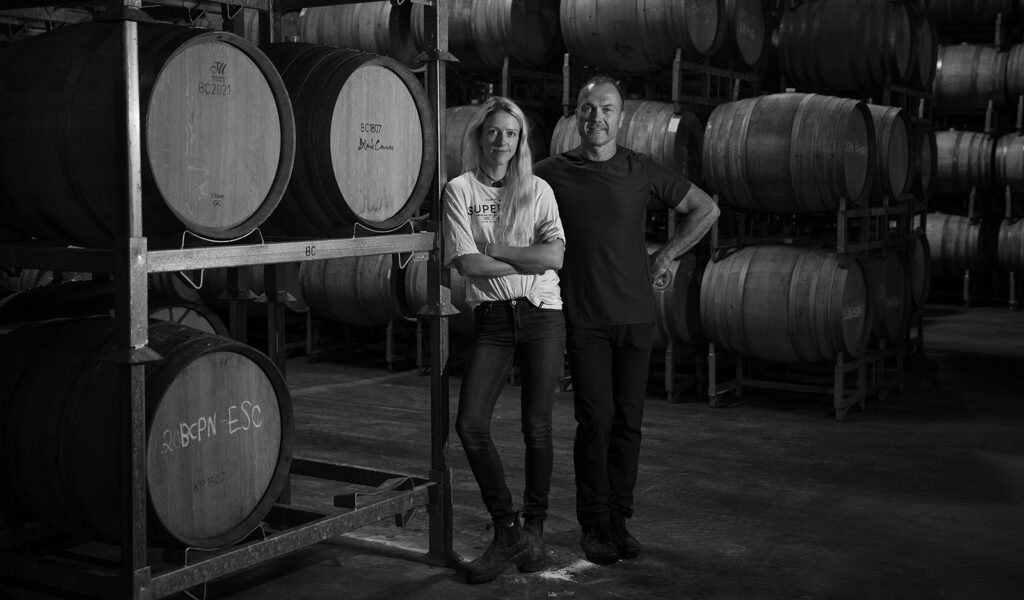
WF: I’ve noticed that in particular the UK writers have really picked up on it in the last couple of years. And when those guys start to notice it, then good things follow. They also do have bloody good Chardonnay just over the water so…
SPT: We had it in Bibendum – the sommelier there really loved our ’18, so they took the entire UK allocation for their restaurant. It’s good when the sommeliers are recognising it and getting behind it.
WF: So it you wanted your wine you had to go and eat at Bibendum!
SPT: Pretty much. And we did! (laughs).
MT: I also went back there, in September!
SPT: Yes. I know. He’s going to skite now. I was sitting home, in lockdown, and Matt was sending me all these photos of him dining out in restaurants.
So.. let’s move on to Pinot?
Our aim with Pinot Noir is to make very perfumed expressions, but with structure and fruit tannins as well. We do use quite a bit of whole bunch in our Pinot. 2018 was a lighter vintage in Marlborough, so this a slight departure from our norm, but I think it is a Nebbiolo-like expression. It’s very floral and savoury but then you’ve got the structure with quite grainy tannins.
MT: The stem tannin is important, but the perfume was there for sure. Also, I get a graphite, pencil-shaving note from it. We love that character in the wines we drank from Chambolle-[Musigny]. It might not be a wine that everyone likes.
SPT: It’s not for a Pinot novice you know? Someone who really understands Burgundy and likes Chambolle-Musigny and perfumed, elegant styles like that. We’re not making a direct comparison of this wine to Chambolle but we have had several people mention that appellation but in a New Zealand context which we won’t refute!
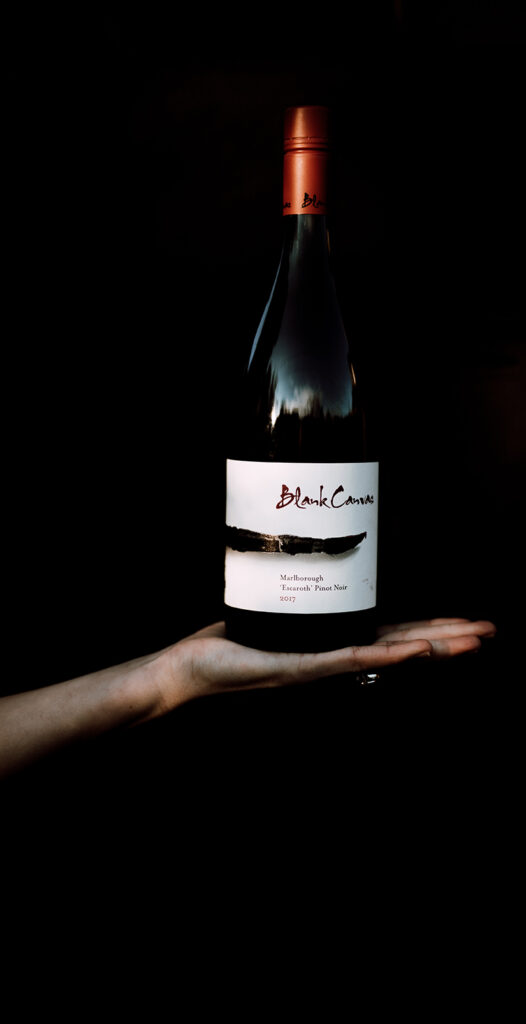
WF: It’s quite light on the nose, and although it’s initially quite perfumed, it’s not a blockbuster. Until you get to taste it. And then… that’s the best Marlborough Pinot I’ve ever had. That’s what that is. It’s got a touch of that Martinborough earth in it, but it’s left that underneath, and applied that purity, and that ethereal lightness. Even the smokiness is quite wispy. I love that.
MT: that’s interesting, because I’ve been on quite a journey with Pinot, and Burgundy. Initially the appellation that impressed me the most was Gevrey. It had ripeness and…
WF: (interrupts, laughing) … he likes the good stuff!
MT: I didn’t particularly like Pommard. Chunky and hard. I found some Volnay really interesting, but now the appellation I think I love the most is probably Chambolle. It’s got lightness, perfume. I’ve moved away from that size and colour.
SPT: We’ve also really liked the Savigny-les-Beaune wines from Simon Bize, I don’t know if you’ve come across them? Amazing wines. They’re beautiful.
WF: Since I’ve lived away from Europe, I’ve found myself losing touch a bit with French wines, but I’m trying to get back there – targeting a few tasting where there will be some good European wines, or finding people who will share wines. It’s funny because I often get comments like “Oh why are you opening that – if I had something that good I’d sit home and drink it all myself” But I think those people don’t get the culture, or soul of wine.
MT: Oh no… when Sophie got her Master of Wine we opened lots of bottles in a week or so, and I organised a surprise lunch. The guy who owns the restaurant Scotch here, he moonlights in coming to your house, cooking a beautiful deg menu, serving and cleaning up! So we kitted this dining room out with an extra table, because we actually had 14 of us, and Sophie had no idea it was happening.
SPT: What was worse was he made me go out for a run, like a decoy, so I come back with a bright red face and all sweaty, open the door and then have a glass of champagne shoved in my hand and loads of party poppers in my face!
MT: But seriously. The guys went to town with the wine. James and Wendy brought a grand cru Armand Rousseau, Simon and Jane brought a Latour ’95… it was beautiful and we had this amazing range of wines, and it was all so cool. Then the funny thing was I had to cook dinner as they were all staying right through.
SPT: It was really nice. You should never drink a special bottle on your own.
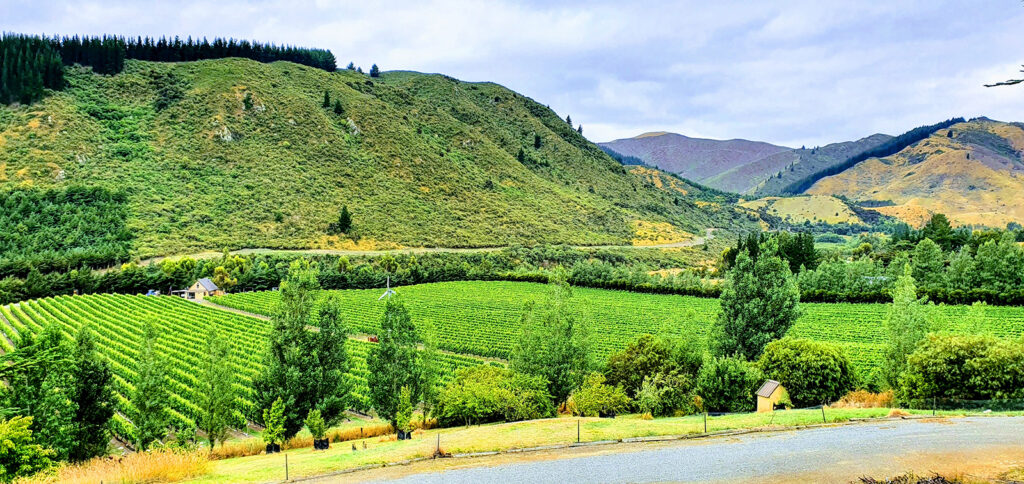
WF: I was trying to encourage some of my group of friends to get into opening good wine and sharing it, and someone waited until I’d pulled the cork out of an old bottle of Penfolds, to then tells me “David – that’s $600” and I’d had no idea. Suddenly everyone wants to try that. We tried to have ‘Poker Nights’ and bring good wine, but that petered out to just beers…
MT: We went the other way (laughs). Years ago, I started a 500 night. Brian Bicknell, James Healy, Simon Waghorn, Gary Duke and myself. They had this rule that you couldn’t spend more than $30 on a bottle of wine. So I’d bring a $200 bottle of Barolo or something. They’re like “hang on a minute” so I said “when is a better time for me to open a decent bottle than here”. So next time everyone brought good bottles and we’ve kept in. But you don’t have to bring something that’s crazy, just bring something you wanna share. The only thing was I always had a tax, and had to pour Sophie a glass on the way out.
WF: I have a problem though with my ‘special bottles’ because I pull them out and I stroke them, tell them I love them, then put it away again. And it might be a couple of years before I see it again – and I do the same, so this goes on and before you know it, it’s been there too long..
MT: See that’s the beauty about having a cellar. You get a bit of pleasure when you buy it, and then every now and then you go ‘that’s going to be a good one’. Rather than just buy it, drink it, one time. You get to look at it.
WF: Yours is very look-at-able, I must say. Mine’s all just in boxes, I probably only have racks for 200, the rest is in the box it came in!
SPT: Go and have a look! It was originally the cupboard under the stairs and then we wanted to do something accessible. We couldn’t dig down because we’re in Springlands and the water table is too high.
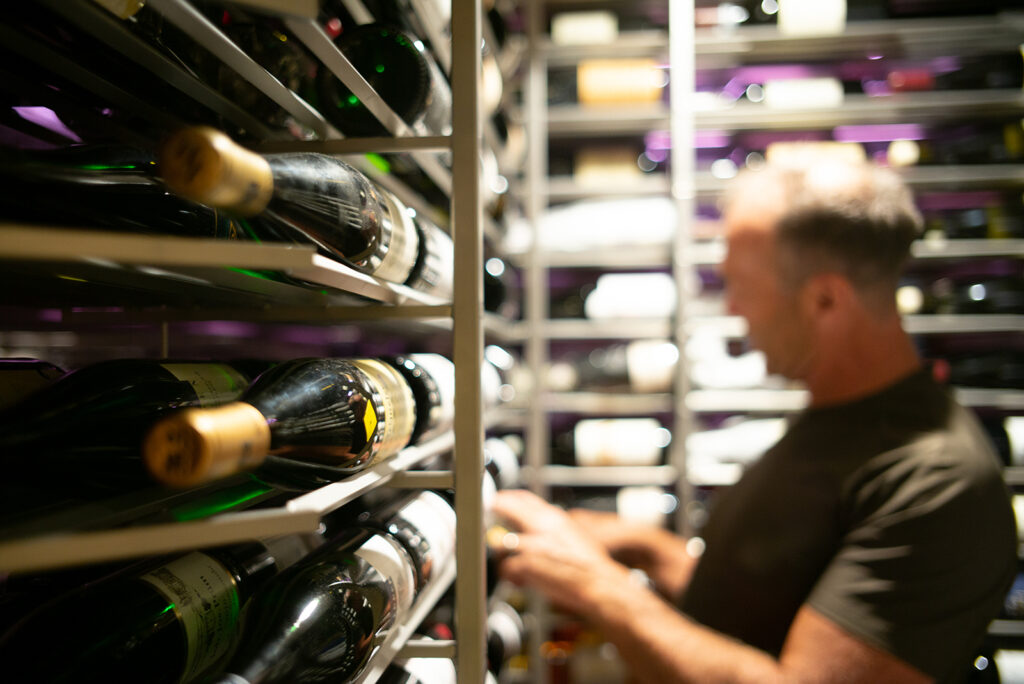
MT: There’s about 2000 bottles in there, it’s a good number. That Quintarelli – the Amarone ’07 – was given to me by the consultant winemaker when he was out here in New Zealand with his wife. He has since died, but was a good friend of mine, and I’m keeping that for when she comes and visits again. Excuse this box of new arrivals, that’s my new sherry. In fact I need to have a look at that.
SPT: No, no you don’t. And this is now our Central Otago Pinot. We both grew up in Central Otago so it’s quite dear to our hearts. We were looking for a spot to source fruit and Anthem Vineyard came up. Steve Smith actually makes some from this same vineyard as well, so we take half each of this little block. It’s in the Gibbston Valley, just to the Queenstown side of Kinross.
WF: I was just about to say Gibbston.. it’s got that written all over it. I love Gibbston Pinot.
SPT: Yup, me too. It’s actually my favourite sub-region. I love the aromatics and elegance.
Have some cheese – this is my favourite, Parmigiano Reggiano – we have an Italian Food Market in Marlborough and we’re used to eating it in Italy, and our daughter loves it. And a hard cheddar, and an aged Gouda as well.
WF: It’s my favourite cheese too – I don’t know how you knew that?! We always put it on our cheeseboard. We can get one in Farro that’s a very aged Gouda and it has that butterscotch character and crystalline, salty bits. We’re on the same page.
SPT: Very aligned. Gibbston Pinot and Parmigiano.
WF: And Marlborough’s best Pinot.
SPT: Honoured, flattered. What I am really excited about is that we are starting to get recognition for these single vineyard sites, and I think that is part of the evolution of Marlborough too. That process where the detail gets more and more over time. As people identify these special sites. What was originally just one big region, then sub-regions eventuate and then you’ve got these little micro-sites.
For this wine we’ve used 50% whole bunch again because we thought it could handle it. Part of our ambition for doing Central Pinot was to have that elegance there, because I think that stylistically Central is changing. I had the Coal Pit Tiwha 2019 and I thought that was actually really nice. That’s got 40% whole bunch and I think Gibbston, in fact, Central in general, it needs whole bunch. If you look at the very top Burgundies, they’re all using high proportion of whole bunch, yet still producing wines that are still an expression of site. It’s about knowing your vineyard and knowing the vintage. Because in a cooler vintage you’re not going to be using as much whole bunch.
We were there two weeks ago, right at the end of the vintage, and Gibbston is usually the last to be harvested. This year we wanted about 30% whereas in ’18 we were comfortable with 50%. It’s interesting because older vines tend you really soak up the whole bunch too, so you need to increase it as the vines age.
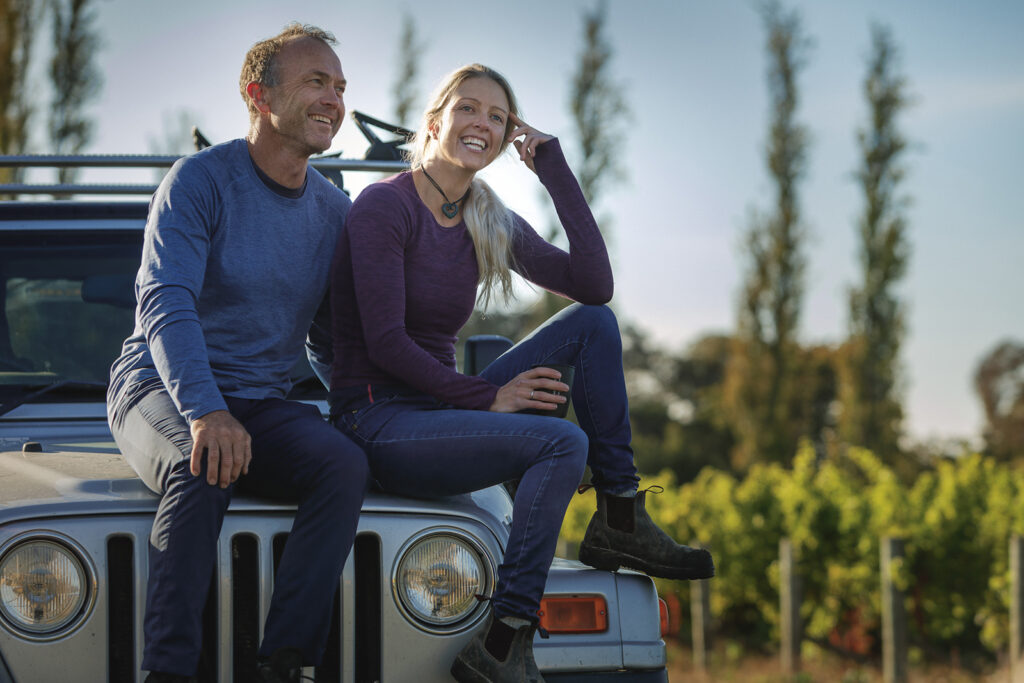
WF: You seem like ‘careful’ winemakers. What’s your approach to oak?
SPT: Good question. We’re very conscious of both our coopers and our toast levels and our new oak percentage. We never go over 35% new oak because we don’t want too much sweet vanillin character. We’re also using low toast oak across all our reds. We want a savoury expression for both our Pinots and Syrah, and with the higher toast you get that mocha/chocolate character that we think meddles with the savoury expression. We look for particular coopers that we like. We like the Mercurey barrels for high impact and we use Francois Freres. The mocha character is a very ‘new world’ Pinot thing and we’re not looking for it. Bell Hill use 100% Mercurey, and you can taste it – you go ‘that’s Bell Hill’ because it’s so distinctive, and not a bad thing at all. We like Bell Hill. They’re an inspiration.
WF: It was inspiring, and so detailed. And so cool – lots of things about that place were so cool.
SPT: So, bit of a gear change. This is our Element Syrah, from Gimblett Gravels. We’re big fans of Northern Rhone – as you probably saw in the cellar – and that’s been our inspiration really. We thought for a long time that Hawke’s Bay Syrah can really compete on the global stage in that cool climate Syrah category. I think Hawke’s Bay Syrah has had a bit of an identity crisis, not knowing exactly what it can and should be.
WF: I think I’ve been lucky in that I’ve come to it quite late, and missed the whole Barossa-wanna-be of it. I think it is quite distinctive, which is a start.
SPT: Our first Syrah was 2014, made from Gimblett Gravels, and we’ve been doing it as a co-ferment, but not with Viognier. We use Gruner Veltliner. Part of our ethos is always asking ‘why?’.
WF: When I heard about that use of Viognier, I asked why – so, now…why Gruner?
MT: You ask why Viognier, and one of the reasons is because that’s what they’ve got – in the Northern Rhone. It’s not necessarily the best option in terms of co-fermentation, nor enhancing the aromatics. But you ask ‘why Gruner?’ and why not Viognier. Often we find examples of Cote Rotie that have a sweetness – an almost apricot jam note which is awkward with the very savoury nature of the coal tar, pepper nature of Syrah. And we don’t want that. We looked at the alternatives – Chardonnay, Riesling, Sauvignon – which might have been a bit scary. Lots of options we could have used, but we came up with Gruner. The reason is if you look at the phenolics, they’re very similar to Viognier, but Gruner’s pithier. It doesn’t go to that sweet jammy stage. And you’ve got white pepper – so black pepper, white pepper…it works.
We use the skins in this. Some people do actually use the whole bunches. But for us I didn’t want the juice of the Gruner, I wanted the phenolics. It’s not that much – just 6 buckets, and it does have an effect! Gives a warmth on the palate, which is really interesting.
SPT: It’s not a big alcohol wine, it’s only 12.9% but it feels like a rich, big wine.
WF: Thanks, it’s been really interesting talking to you guys. Sometimes it can be like pulling teeth, but this has been really entertaining.
MT: We were sitting around this table not that long ago, with Chris Howard, he’s got a degree in Anthropology, and he writes for WineFolly. Towards the end of the night he says “I’ve seen a lot of wine producers, but you guys are the most hardcore.”
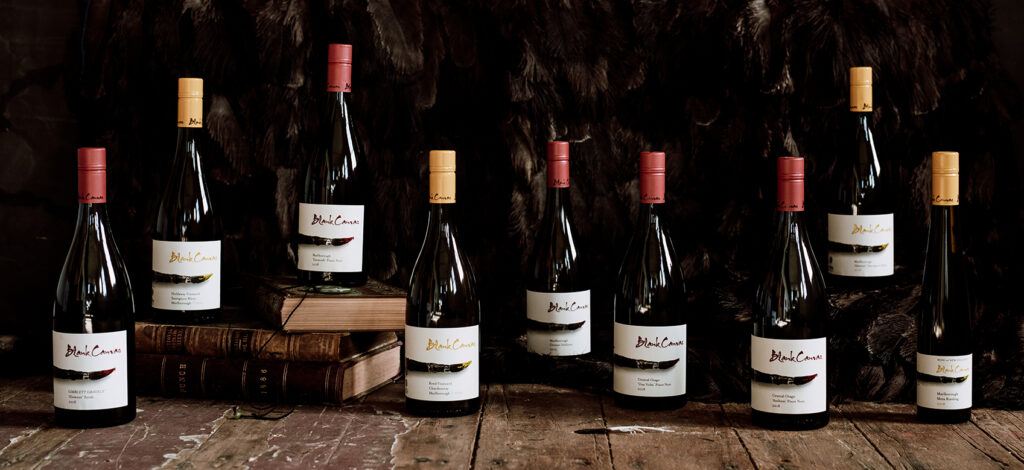
WF: You’re pretty into it, yes.
MT: We can talk wine morning, afternoon, evening, night time. Wine.
WF: Is this how you can put up with a Master of Wine? Because you’re as into it as she is?
MT: Before we had Isabella, who’s not here tonight… you’d notice if she was… we had about five years from when I met Sophie. I said I’m going to Europe – consulting – and you can come. So from that point on we spent five years going to every region – South America, Italy, France, Spain. So in all the wine regions we’ve tasted all the wines, been to all the restaurants, and it was an amazing, incredible time actually.
And for Sophie she was launched into the European world of wine. Which opened the door to the opportunity to do a Master of Wine, because you can’t do it unless you understand it, and have gone to those places. You’ve got to go there, to wrap your head around them. She had good wine knowledge locally, but then… And I don’t think we appreciated it. Just how cool it was!
I was doing a lot of travelling. 170 flights a year for 28 years. That’s a lot. So I’ve quite enjoyed not doing that. But there is a point where I’m starting to think Blenheim’s pretty small! I’m missing London. I’d hate to live there, but I love visiting.
WF: I chose not to. I could have actually gone to College in London, but my brother lived in London, so that was good enough! I had somewhere to stay, but it’s a tough place, and dirty! I lived in New York in the ‘90s for a few months and it was aces. Still very dangerous though – heaps of homeless, and crime. But I loved it. I had a job in a bar in the South Street Seaport, when the Twin Towers were still there, and it was super busy. It only closed for 2 hours a day, between 4am and 6am, so we’d get all the people from all the others bars, including staff, in until all hours. And I could even at 4am get a bus up First Avenue to where I was staying in the East Village, and get home, and listen to people being murdered outside.
MT: It’s a hard place to live. But it has a multicultural energy that Hong Kong has, and New York has. But all those places are hard places to live, but great places to visit.
All photos supplied by Blank Canvas – several taken by the very talented Rich Brimer.

